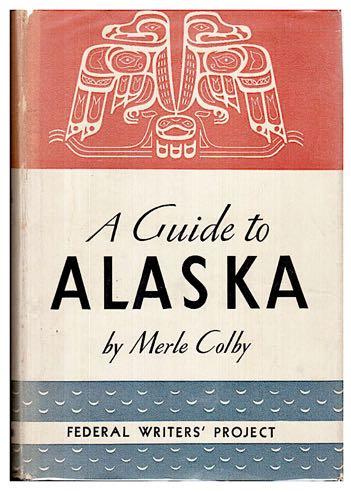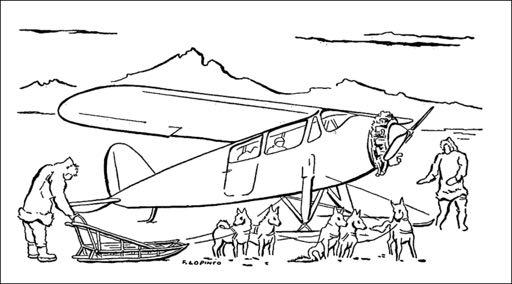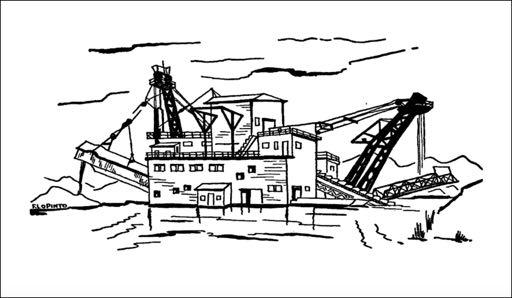
4 minute read
THE WPA GUIDE TO ALASKA


Merle Colby was the only writer to be solely attributed as the author of a Federal Writer’s Project guidebook.
Advertisement
The WPA Guide to Alaska
In 1935, with the nation in the grip of a crippling depression, President Franklin D. Roosevelt created the Federal Writers Project as part of the United States Work Progress Administration (WPA), a New Deal jobs program designed to provide employment for historians, teachers, writers, editors, cartographers, librarians, and other white-collar workers. The purpose of the project - and its most visible legacy - was a series of guidebooks which focused on the scenic, historical, cultural, and economic resources of the United States, comprising the first self-portrait of America.
While almost all of the state guidebooks were written by editorial committees, the 427-page guide for the territory of Alaska was the only guidebook attributed to a sole writer, Merle Colby, who was already the author of two novels and numerous short stories about the American frontier. In addition to dozens of photographs, the illustrations and watercolors in the book were by Merlin Pollock and Ferdinand Lo Pinto, who would both go on to enjoy distinguished careers as artists. A Guide to Alaska: Last American Frontier included a foreword by John W. Troy, then-Governor of the territory of Alaska. Troy wrote, “Scarcely more than a generation ago, well within the memory of many living Alaskans, the news was flashed in 1897 over telegraph wires that the steamer Portland had arrived in Seattle with ‘a ton of gold.’ Even more important, and certainly no less dramatic, is the less-known Alaska of today — the Alaska of graveled automobile roads, of airplanes, used as casually by Alaskans as are taxis in continental United States, of giant gold dredges, of great fishing fleets, of farms with the latest in modern equipment, of homes set in frames of flowers and surrounded with vegetable gardens, of large shops, theaters, churches, schools, clubs, newspapers, and America’s farthest-north university.”

Watercolor painting, “Matanuska Valley,” by WPA artist Merlin Pollock, shows the town of Palmer beneath the Chugach Mountains, with the iconic Colony water tower on the left.
The WPA guidebooks included lengthy and detailed histories of their subject areas, and the guidebook for Alaska is no exception. From the winter of 1727-28, when Vitus Bering was overseeing the construction of the ship which would take him into Alaskan waters, Colby’s wideranging history of explorations and expeditions to Alaska, and how they affected the Native residents and the future of the land, effectively sets the framework for histories to follow. He explains the later complex relationships between the territory and the the federal government with the insight of his time as a government official. In his book, Soul of a People: The WPA Writers’ Project Uncovers Depression America, author David A. Taylor provides an important perspective on the guidebooks: “The Writers’ Project, like the rest of the WPA, had its roots in poverty relief, not in a patriotic desire to celebrate America. The Depression’s bleakest days had passed, but families still slept on park benches and in stairwells. Across the countryside, thousands of families lost their farms in a foreclosure epidemic that sparked desperate protests. The economic hurricane didn’t spare writers: by 1935, a quarter of the U.S. publishing industry was out of work.”
Taylor, whose book was named one of the best books of 2009 and spawned a Smithsonian Channel documentary, also spoke to the historic importance of the Writer’s Project. Duly noting the widespread skepticism and controversy which circulated at the time, he explained: “The Project’s designers believed that celebrating American diversity could prevent a wave of fascism like the one Europe was experiencing. Eleanor Roosevelt crystallized this idea when she said that America’s diversity was its strong point. This was in response to Hitler, who championed a monolithic, homogeneous population and viewed America as a great country weakened by fissures and subcultures. The Roosevelts essentially said, ‘No, that variety is our greatest strength.’ The WPA guides and interviews attempted to show that variety.” The WPA Guide to Alaska was described b y K i r k u s R e v i e w i n 1 9 3 9 a s a “Comprehensive fact book of Alaska's history, points of interest, resources, train, boat and plane and highway travel, anecdotes, hunting and fishing, places to stay, prices, etc., etc. Complete coverage for the prospective traveler, with suggestions for various types of trips, and ways of getting to Alaska. Not a personal experience travel book, but manages to convey a sense of enthusiasm for the territory, its background and future. Good library item, and practically a must for Alaska travelers.”
Today Merle Colby’s WPA Guide to Alaska provides a richly detailed look at the territory at an important time in the history of America, and at a critically transitional time for the future 49th state. Copies are often available at online book sources, and the full book is available to download or read online at:
https://archive.org/details/ alaskaguidetolas00writrich ~•~
Below: Illustrations by F. Lo Pinto










